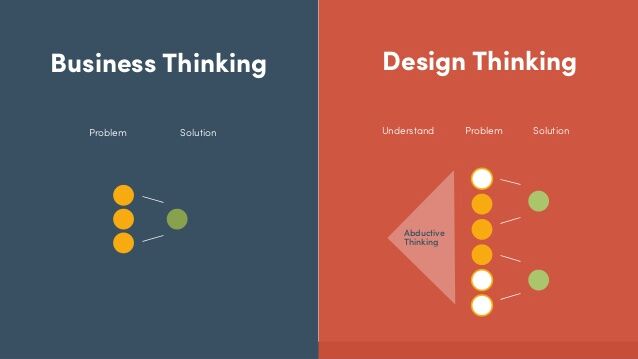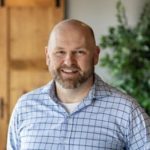
One of the very best things about my job is that people entrust me with their ideas.
Whether it’s an individual sparked with an innovative market disruption, or a team manager searching for a way to make her team more efficient, it always feels like an honor to be given the acorn of a what could be a groundbreaking product.
Often though, the sharing of that idea by a future startup founder is couched with this concern:
“I worry that if I tell people about this idea, someone is going to steal it.”
While I’m sympathetic, the truth is that this is an extremely naïve viewpoint.
It’s important to share your digital product ideas! So at this point in a conversation like this, I take seriously my responsibility to challenge the other person’s assumptions about the way to make a reality out of their idea.
Digital Product Ideas are Cheap; Execution is Expensive.
Nobel Laureate psychologist and economist Daniel Kahneman estimates normal humans have roughly 20,000 “psychological presents” in a single day. Now multiply that over the course of a year — that’s a lot of ideas!
The point is, there’s a very long way from idea to a durable and sustainable product. Simply put, an idea is not a product, a company, or even defensible intellectual property … it’s simply an idea.
It’s a disease to think that a really great idea is 90% of the work. The problem with that is that there’s a tremendous amount of craftsmanship in between a great idea and a great product.
Steve Jobs
The idea is the easy part — it’s everything else thereafter that’s costly. From discovery, to prototyping, to minimum viable product, to product-market fit, to panicked pivots in a bid to reach profitability … there are a lot of phases before revenue positivity. In the best case scenarios, we’re still talking years. Doesn’t the burden of making that idea a reality seem heavy? Seems like a lot to expect of someone who didn’t even have the idea in the first place.
Never underestimate the value of one’s own perspective, experience, and most importantly, passion around taking an idea through the phases of execution.
Paul Graham, one of the most successful investors on the planet, doesn’t mince words about forcing NDAs for what amount to little more than ideas. Graham knows that it’s the people and the execution that matter.
The Elements of a Digital Product
So we’re past being overly precious about ideas? Good! Let’s use the analogy of a fire. A fire requires three continuous conditions prior to and after being lit to burn; fuel, heat and oxygen. The removal of any of the three slows and/or stops the fire.
It’s the same with products. In order to have a product, a few conditions have to be present:
HEAT – Do potential customers benefit from the intended outcome?
OXYGEN – Is there a market demand for the above outcome?
FUEL – Is there the necessary capital (resources) to deliver the outcome?

In this analogy, the idea is the spark, but the presence of customer benefit, market demand, and delivery are crucial to sustaining the product. If a product doesn’t hit all three then nothing else matters.
Sharing Your Product Idea Brings Perspective & Knowledge
If products are about bringing solutions to problems, then the wider we think about the range of problems the more likely we will find comprehensive and efficient solutions.
Getting wider usually means involving more people in the process, getting more perspective and viewpoints on the problem. The “idea” is always about the method of solving the problem, then the more perspectives we get on the problem, the better we can solve for it and thus the better the “idea” in the end.

Cathy Wang explains classic business thinking versus design thinking and how abductive reasoning broadens the process for better results.
It’s important to have people who are absolutely willing to say you’re wrong or who have a totally different perspective than you do on everything. Fresh ideas are hard to come by, and good ones are even harder.
Shonda Rhimes
The more an idea is shared, the more perspective and feedback can be applied and the more people can help. That guided discovery is key to building the right kind of product.
Building a Digital Product Is Easier Than Ever Before
Now that it is clear that talking to lots of people is a good idea, here’s the fantastic payoff.
Thanks to:
- the proliferation of open source software development tools,
- the availability of cloud-based deployments,
- better project management frameworks for digital products like Agile,
- and an increasing interest in municipalities to fund and support innovation ecosystems,
… building digital products easier than ever before.
Does that mean it’s easy in 2019? Absolutely not!
But the sheer power of what a small development team, a good user experience lead, and product owner can rapidly put into production backed by little more than a credit card or a friends and family funding round is staggering in comparison to what was required to build digital products in 1998.
I’m old enough now to see the technological mountains of the dotcom era long beaten into dust when I marvel at the dizzying heights which modern products can quickly reach.
So if ideas are cheap and there are better resources to bring them to life than ever before … imagine what’s possible that wasn’t just a decade ago?! If anything this should only create more ideas to solve more problems.
Ideas will always take dedication and passion to execute upon, but now with better frameworks, tools, and ecosystems — the right guardrails are there. There’s never a better time to share your ideas and start building something truly inspiring.
Loved the article? Hated it? Didn’t even read it?
We’d love to hear from you.




Thanks for Valuable and brain opening blog . specially graphical explanation.